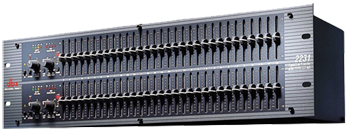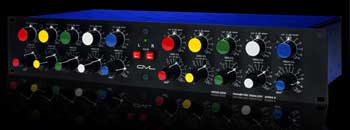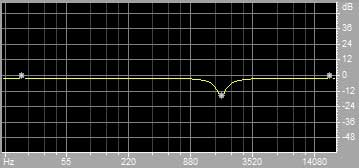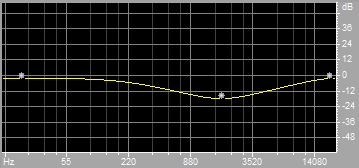Advertisement
Blog Archive
- ► 2021 (1)
- ► 2019 (3)
- ► 2017 (1)
- ► 2016 (7)
- ► 2015 (5)
- ► 2014 (26)
- ▼ 2013 (40)
- ► 2012 (33)
Equalizers
Equalizers - EQ

Hi dear norCtrack users. Today we will talk about a very important tool - Equalizers.
Equalizer - a tool with which you can work on part of the spectrum of sound, leaving the other components of the spectrum intact.
On the net quite a lot of different information about Equalizers. Most of this information relates to the technical side of the issue. I want to draw your attention to the equalizer as the instrument, which is an integral part of the musical production.
If we consider the whole process of recording and production, it is appropriate to use equalizer at almost all stages. This is primarily directly recording, ie fixing musical material on analog or digital media: this reduction, that is bringing a collection of disparate sounding instruments to the whole musical picture, and this is serious, that is, the final finishing mix to a state in which it and the listener hears final.
Differences between these three points are very clear. At the stage of recording, equalizer is sound recording part of track. Its impact at the same time, and after recording is completed, change the color of the equalizer is impossible. Usually used for recording or equalizers, built in preamp or combo or separate units. Quality power equalization is very expensive, but the musicality of these devices at a high level.
If, for example, the singer has any particularly beautiful voice frequencies, then using the equalizer these frequencies can be emphasized. Conversely, if the lack of any frequency - they can be added, bringing the specific characteristic of this equalizer, color.
When you configure a bass or guitar musicians and sound engineers, depending on the genre, which will be done recording, often have the opportunity to adjust the equalizer, built-in amp, preamp or guitar head. For different genres guitar sound may need different, and thanks to equalizers one and the same pair of "guitar amp plus" may be relevant to stylistically distant tracks.
At the mastering stage equalization produces a very fine, because the basic frequency pattern usually already set up on the mix. In principle, a good note to mastering it may not be necessary.
But more typical use of equalizers, Of course, the mixing stage. Of course, such a range of surgical procedures should be as small as possible. This is evidenced by the majority of the most experienced engineers in the world. Nevertheless, in many cases (due to mistakes made at the stage arrangements, as well as because of deficiencies in tone generators or too careful work engineer information) completely avoid interference equalizer is impossible.
Therefore, in this article I will briefly and clearly as possible try to describe what is EQ, what are the main types of equalizers, describe the basic parameters of EQ and tell what equalizer settings appropriate in certain cases. Will also be indirectly affected by issues such as EQ vocals and instruments. More on this in the near future, regular readers of this blog can be found in another article devoted to the music mixing.
Types of Equalizers
As I wrote, the equalizer is designed to work on a specific part of the spectrum of an instrument or voice. The result of this feedback is to increase or decrease the amplitude of sound at a specific frequency spectrum.
Since the equalizer affects the amplitude of sound, ie the volume, this device belongs to dynamic processing (we know that the dynamics - change in volume). All appliances, somehow affecting the part of the spectrum, usually referred to as filters.
On the one hand, equalizer - is a special case of the filter. On the other - the filters can have several other options, but because they are isolated in a separate category of treatment.
Equalizers are divided into two types: graphic and parametric.
Graphic Equalizers
 Graphic equalizers are more often used in concert work, when requiring multiband offset portals, lumbago, monitors. The simplest example of such a device - a panel with a set of sliders, each of which increases or decreases the amplitude of the sound at a fixed frequency (frequency band). Common type of graphic equalizers - a device with a 31 band EQ, which is also called 1/3-octave graphic equalizer.
Graphic equalizers are more often used in concert work, when requiring multiband offset portals, lumbago, monitors. The simplest example of such a device - a panel with a set of sliders, each of which increases or decreases the amplitude of the sound at a fixed frequency (frequency band). Common type of graphic equalizers - a device with a 31 band EQ, which is also called 1/3-octave graphic equalizer.
Let me remind you, if someone forgot that the dependence of the octave and Hertz - nonlinear. Improving sound one octave corresponds to a doubling of the frequency of its root tone. Therefore, the frequency range, which is responsible for each of the knobs of the EQ is not a fixed value. Whereas the interval range - fixed. 1/3-octave equalizer usually covers a range of frequencies, which, as is commonly believed, the most ordinary human ear is sensitive, that is from 20 Hz to 20 kHZ. At the same time, every subsequent three stripes is added to the previous one octave band, which is affected by the handle. The first band - 20 Hz, the fourth - 40 Hz, which corresponds to a decrease in the tone one octave. The second and third band are responsible for the intermediate values in the 1/3 octave. Between 20 hertz and 20 kilohertz range of 10 octaves, and therefore, together with the first band equalizer consists of 31 one-third-octave slider.
Graphic equalizers have certain advantages. First of all - it is simple and quick impact on the spectrum, the ability to simultaneously change completely different parts of the spectrum as a plus or minus, as well as convenience and graphics clarity. But, at the same time, unfortunately, the disadvantages of these devices is very important. The main drawback - the inability to precisely locate the frequency at which you need to work on. If the resonance frequency of 1.7 kHz, then he will have to adjust the slider, which is closest to this frequency, ie 1.6. This, of course, a very coarse adjustment.
The second drawback - fixed level of merit in each lane (more about Q below). Some expensive models allow you to adjust the quality factor, but most conventional graphic equalizers can not.
And the third, a very important drawback is that even the close proximity of neighboring sliders is impossible to get a smooth change of the spectrum. Because of this feature graphic equalizer brings in the sound distortion, which is not so noticeable during the concert, but for the purposes of recording can be significant.
Therefore, when working in the studio often avoid the use of graphic equalizers, preferring a more agile and accurate parametric.
Parametric Equalizers
 Parametric equalizer, unlike graphics do not have so many bands of equalization. However, thanks to precise localization of the frequency on which to act, is it not necessary. Most often parametric equalizers have from one to four lanes. Sometimes the strips are fixed in a certain range within which it is possible to adjust their frequency, but often can involve all of the bands over the entire range. Its name parametric EQ got thanks to a fully editable parameters equalization. In skilled hands, these devices can give the sound engineer great advantage in building a musical picture. Consider these options.
Parametric equalizer, unlike graphics do not have so many bands of equalization. However, thanks to precise localization of the frequency on which to act, is it not necessary. Most often parametric equalizers have from one to four lanes. Sometimes the strips are fixed in a certain range within which it is possible to adjust their frequency, but often can involve all of the bands over the entire range. Its name parametric EQ got thanks to a fully editable parameters equalization. In skilled hands, these devices can give the sound engineer great advantage in building a musical picture. Consider these options.
EQ parameters
- Filter Type
- Operating Frequency
- Quality
- Sensitivity (gain)
Let's start with the operating frequency. Actually, it's the frequency, which is counting on the work of the equalizer. The most convenient parametric EQ is the ability to refine the operating frequency to hertz. With this we can eliminate interfering resonance not meshing useful spectrum. Operating frequency is denoted by the term parametric EQ Frequency.
Next. When choosing the type of filter we choose a way to impact on the spectrum. Not all equalizers have the ability to change the type of filter, especially if it is about iron instruments. Software equalizer (eg recording system ProTools) often give us a choice. Following basic types of filters.
 Cut filter. The filter cuts off low and high frequency above a certain frequency , and it does so with a certain level of the slope . In standard cases edged filters are either 2 -bit (12 dB / oct . ) Or 4 -bit ( 24 dB / oct . ) . But sometimes there is an opportunity to engage and 1 - or 3 -bit filters (6 and 18 dB / oct . Respectively). Using , for example , 2 -bit of the filter means that a change in frequency spectrum of an octave sound volume varies by 12 decibels. Cut filter enhances its effect with increasing frequency. If this high pass filter , its effect is amplified in the positive direction frequency schedule . If this low-frequency cut filter - it is reinforced in the negative direction.
Cut filter. The filter cuts off low and high frequency above a certain frequency , and it does so with a certain level of the slope . In standard cases edged filters are either 2 -bit (12 dB / oct . ) Or 4 -bit ( 24 dB / oct . ) . But sometimes there is an opportunity to engage and 1 - or 3 -bit filters (6 and 18 dB / oct . Respectively). Using , for example , 2 -bit of the filter means that a change in frequency spectrum of an octave sound volume varies by 12 decibels. Cut filter enhances its effect with increasing frequency. If this high pass filter , its effect is amplified in the positive direction frequency schedule . If this low-frequency cut filter - it is reinforced in the negative direction.
Example . You must use cut 2 -bit low-pass filter with an operating frequency of 300 hertz. Frequencies above 300 Hz intact. Down scheduled frequency suppression will be , so that at 150 Hz (i.e., one octave lower ), its volume will be reduced by 12 dB at 75 Hz ( two octaves below) - 24 dB , and so on. How it looks graphically - you can see in the picture just above.
 Shelf EQ. At first glance this looks like a type of EQ cut filter . It also acts on the range of above or below a given operating frequency. But the principle of its impact is somewhat different , and this is due to the prevalence of its use for many purposes in the process of working with sound.
Shelf EQ. At first glance this looks like a type of EQ cut filter . It also acts on the range of above or below a given operating frequency. But the principle of its impact is somewhat different , and this is due to the prevalence of its use for many purposes in the process of working with sound.
Firstly, the equalizer operates on the shelf frequency range uniformly changing its higher or lower than the predetermined frequency. That is , the reduction of the amplitude using the shelf EQ will decrease the volume with the same force as one octave , and three . Literally, the word " shelf » (shelf) means "shelf" and the name pretty accurately describes how it works.
Secondly, shelf EQ can work as a plus and minus (while trimming - only minus). Due to this property, the filter using the shelf can not only lower frequencies, but the sound and give the desired color. For example, a slight lifting "shelf" treble gives uniform "enlightened" coloring, without any protrusions resonances.
Third, when working offshore filter "in the red", the sound of the instrument is not castrated because he does not kill frequency dramatically, as does the low-cut filter.
Example. If we consider the effect of two types of equalizers for the same sound, and set the operating frequency of 200 Hz, the 24-decibel bass cut filter will result in which 50 hertz this instrument will sound at 48 decibels quieter (that is, actually cease to be heard.) Whereas shelf EQ will slightly reduce the volume of low frequencies, leaving the inherent sound natural "meat", for example, making it 4-6 dB quieter, though a value of 100 Hz, at a value of at least 20 hertz.
 Band-pass filter. This is the most commonly used type of equalizer. It allows to raise or lower a specific frequency range to a specific value in decibels, and the curve with a predetermined schedule. This equalizer most fully corresponds to the name "parametric".
Band-pass filter. This is the most commonly used type of equalizer. It allows to raise or lower a specific frequency range to a specific value in decibels, and the curve with a predetermined schedule. This equalizer most fully corresponds to the name "parametric".
Before you continue description of its features, you must still return to the concepts of good quality and sensitivity.
EQ sensitivity (Gain) shows how many decibels of sound amplitude will change the operating frequency. We must understand that this pen has an impact not only on the very same frequency, but also near to her frequency, and impact on the surrounding frequency is controlled by the value of merit.
 EQ Q factor (Q) - a value that indicates how wide will hump or failure in the operating frequency (to the left and right of the fundamental frequency on the graph) . Attention! Q-factor - a value inversely proportional to the width of the head or failure . The higher the Q, the thinner the band , which will affect the sensitivity knob . For example , a value of Q = 0.3, you can change quite a wide portion of the spectrum . And at the value Q = 7 - on the contrary , a thin strip , practically only very selected frequency . Figures shown on the left first value of Q is set high , then low.
EQ Q factor (Q) - a value that indicates how wide will hump or failure in the operating frequency (to the left and right of the fundamental frequency on the graph) . Attention! Q-factor - a value inversely proportional to the width of the head or failure . The higher the Q, the thinner the band , which will affect the sensitivity knob . For example , a value of Q = 0.3, you can change quite a wide portion of the spectrum . And at the value Q = 7 - on the contrary , a thin strip , practically only very selected frequency . Figures shown on the left first value of Q is set high , then low.
Using Equalizer
We return to the band-pass filter. Its use is indispensable in cases when you want to put in the mix with a similar two sound spectrum, and thus achieve the readability of each of the sounds. Not always resolved conflicts switching frequency cut filter. Sometimes finding them requires a more delicate approach.
Furthermore, in some cases, band pass filter eliminates the disadvantages tonal voice or instrument sound adjust the effects on the room standing wave resonances.
Often, the nature of the singer a little nasally, talks and sings "nose." This effect can be partially neutralize, if slightly lower frequency band ranging from approximately 500 to 700 hertz with an average Q factor. The exact value of the root frequency must be selected in each case individually.
Different instruments, you can give a little more meat or brightness, manipulating frequencies in different regions of the spectrum. Also, using the bandpass filter can be "put in the mix" and bass drum, especially if both of these sound too massive and energetic.
Most parametrics barrel medium or low Q (broad hump) is usually added so-called "punch", ie click conferring barrel attack. Search and add useful frequency drums should be in the range from 3.5 to 5 kHz.
In EQ there are many ways of application. Like any other musical instrument (as applied to music equalizer - this is a musical instrument), it requires skills in the work. Unfortunately, most novice arrangers and engineers EQ abuse while working on the music. It was once peculiar to me, until one day I had not thought to put all the equalizers in the project bypass, and then I suddenly heard that "it was something better."
Now, when I mostly work in analog environment and use equalizer remote, I became much more restrained and judicious when using the equalizer. So I want to remind everyone of the basic thesis that it would be nice to adopt each.
- Good sound does not need equalization. Should not include an equalizer just "make it."
- Equalisation on intelligence - is the elimination of errors. Try to anticipate their possible occurrence to minimize interference.
- EQ always improves the sound, simply because it makes it less natural. No need to rely on what someone "pull EQ" your flaws.
- If possible, use the equalizer only downward.
- Periodically press at all equalizers bypass, to ensure that their use has a positive effect.
- If you did EQ and feel that stalled - reset and start all over again.
Take these points into service, and you greatly simplify your work on the note. Remember that if you can not use the equalizer - no need to use it. And then in each case, when you do it will be included in the work, you will treat it carefully and accurately.
-
Tags:
- equalizer
- eq
- sound spectrum











Comments
amazing. It kind of feels that you are doing any distinctive
trick. Furthermore, The contents are masterpiece. you have done a fantastic activity in this subject!
reporting! Keep up the amazing works guys I've added you
guys to my own blogroll.
This post actually made my day. You cann't imagine just how much time I had spent for this information!
Thanks!
RSS feed for comments to this post